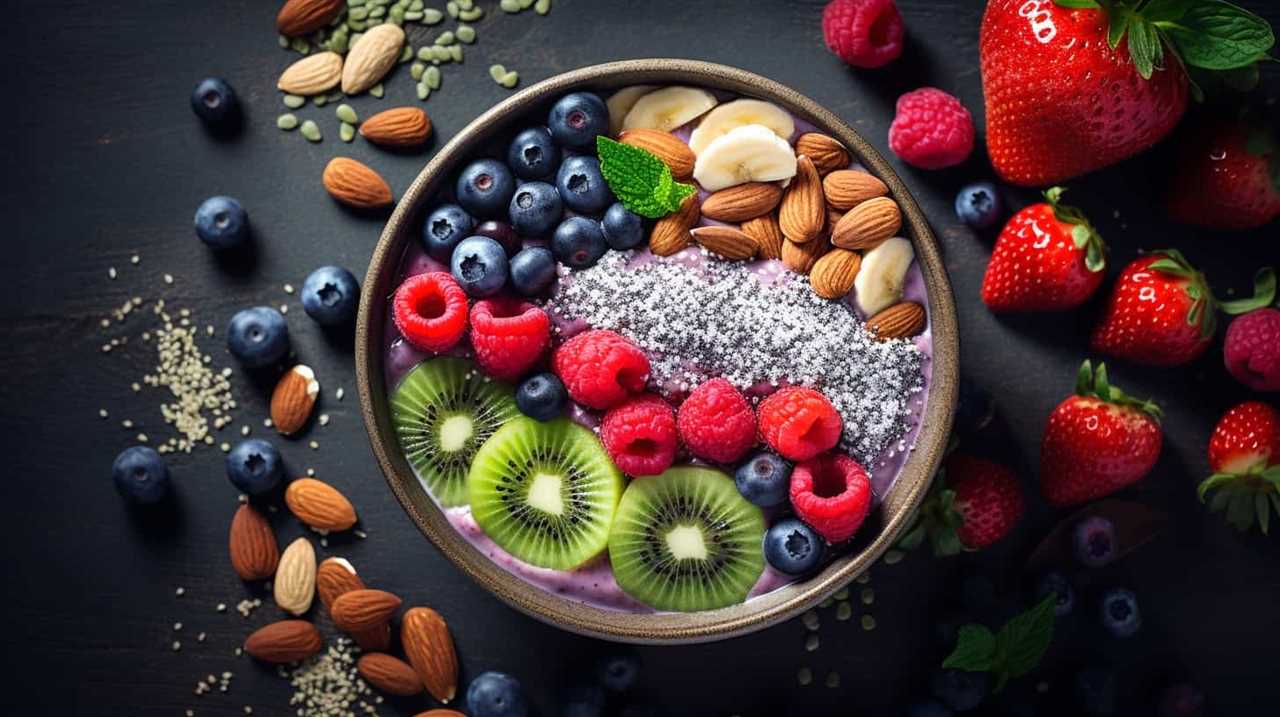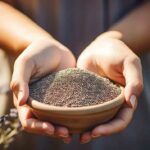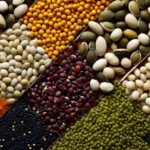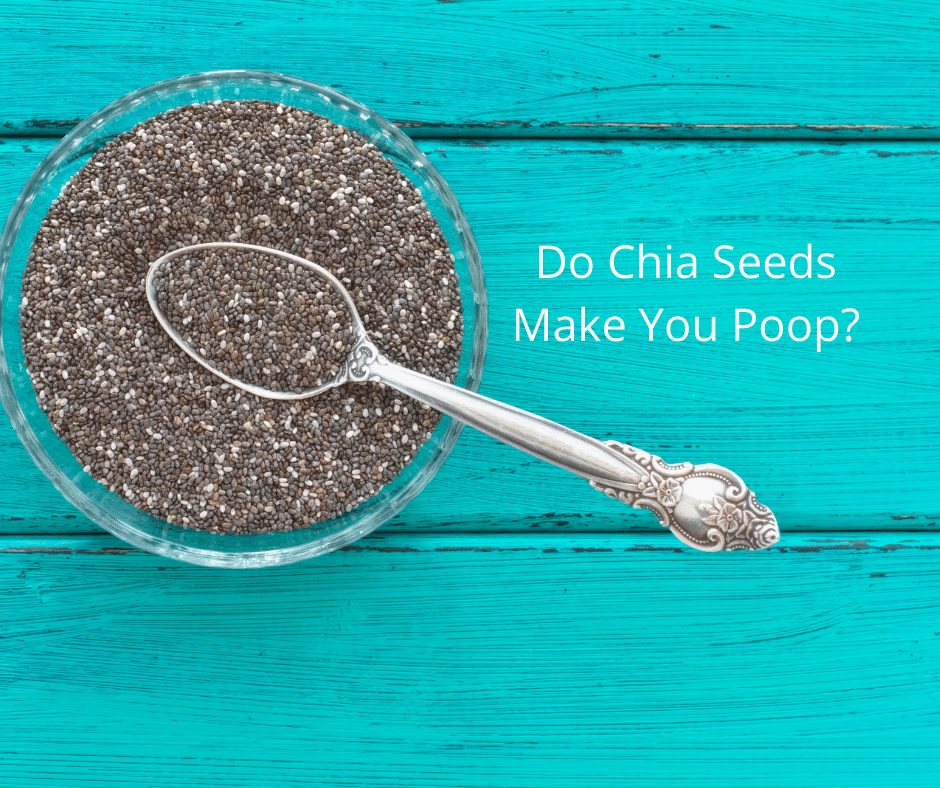It is commonly recognized that following a gluten-free diet is important, but did you know that certain foods may still pose risks? This article explores whether chia seeds are suitable for consumption while on a gluten-free diet.
With evidence-based research, we’ll delve into the potential risks of gluten contamination and provide tips for safely incorporating chia seeds.
So, if you’re looking to maintain a healthy gluten-free lifestyle, keep reading to learn more about chia’s role in your diet.
Key Takeaways
- Chia seeds are naturally gluten-free and can be safely incorporated into a gluten-free diet.
- Chia seeds are high in fiber and omega-3 fatty acids, which can benefit gut health and overall well-being.
- It is important to choose certified gluten-free chia seeds and store them in a gluten-free environment to avoid contamination risks.
- More research is needed to fully understand the effects of chia seeds on gluten sensitivity, but incorporating them into a gluten-free diet may have positive impacts on gut health and omega-3 intake.
The Gluten-Free Diet Basics
When following a gluten-free diet, it’s important to understand the basics in order to maintain a healthy and safe lifestyle. The benefits of a gluten-free diet extend beyond those with celiac disease or gluten sensitivities. It can improve digestive health, increase energy levels, and promote overall well-being. By eliminating gluten, individuals often experience reduced inflammation and improved nutrient absorption.
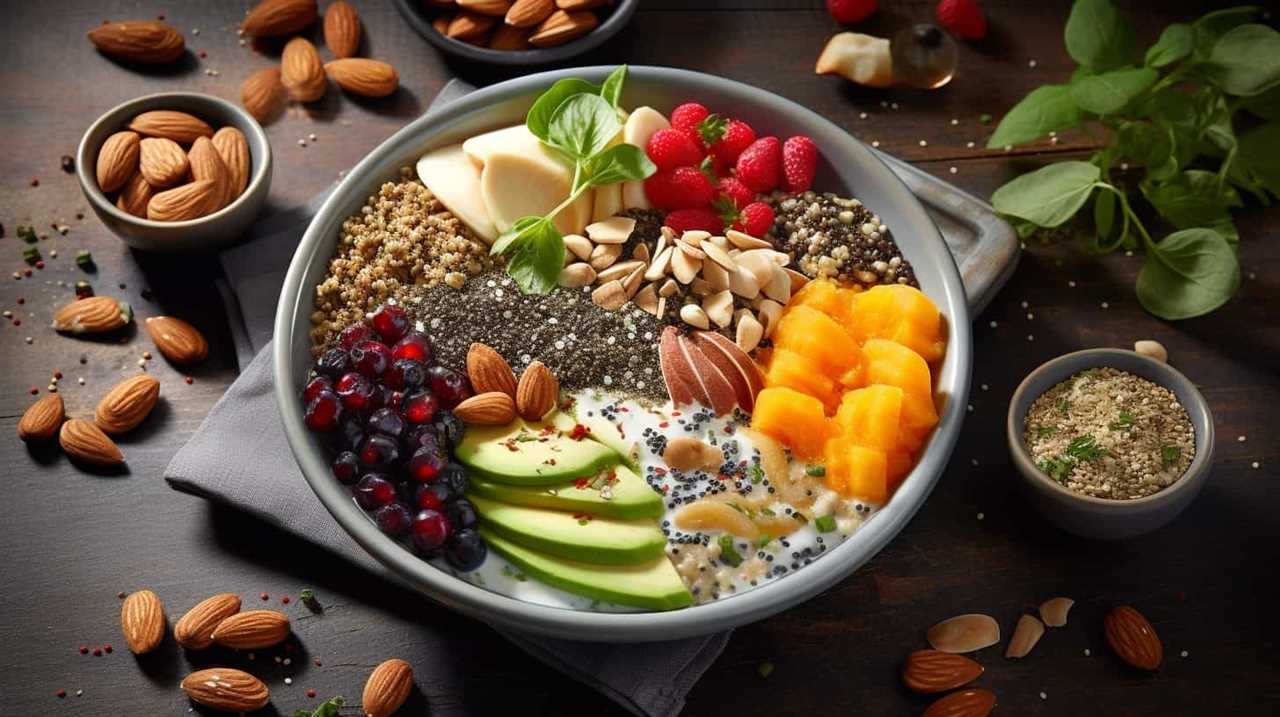
To successfully follow a gluten-free diet, it’s crucial to know the common substitutes for gluten-containing foods. Some popular alternatives include almond flour, coconut flour, and tapioca flour. These substitutes can be used in baking and cooking to create delicious gluten-free versions of favorite dishes. Other gluten-free options include quinoa, rice, and corn, which can be used as substitutes for grains. Additionally, there are many gluten-free packaged products available, such as bread, pasta, and snacks, to make the transition easier.
Understanding the benefits of a gluten-free diet and familiarizing oneself with common gluten-free substitutes are essential for maintaining a healthy and enjoyable gluten-free lifestyle.
Understanding Chia Seeds
To continue our exploration of a gluten-free diet and its benefits, let’s delve into understanding chia seeds. Chia seeds are small, oval-shaped seeds that come from the Salvia hispanica plant, which is native to Mexico. These tiny seeds pack a powerful nutritional punch and have become increasingly popular in recent years.
Here are some key benefits of chia seeds:
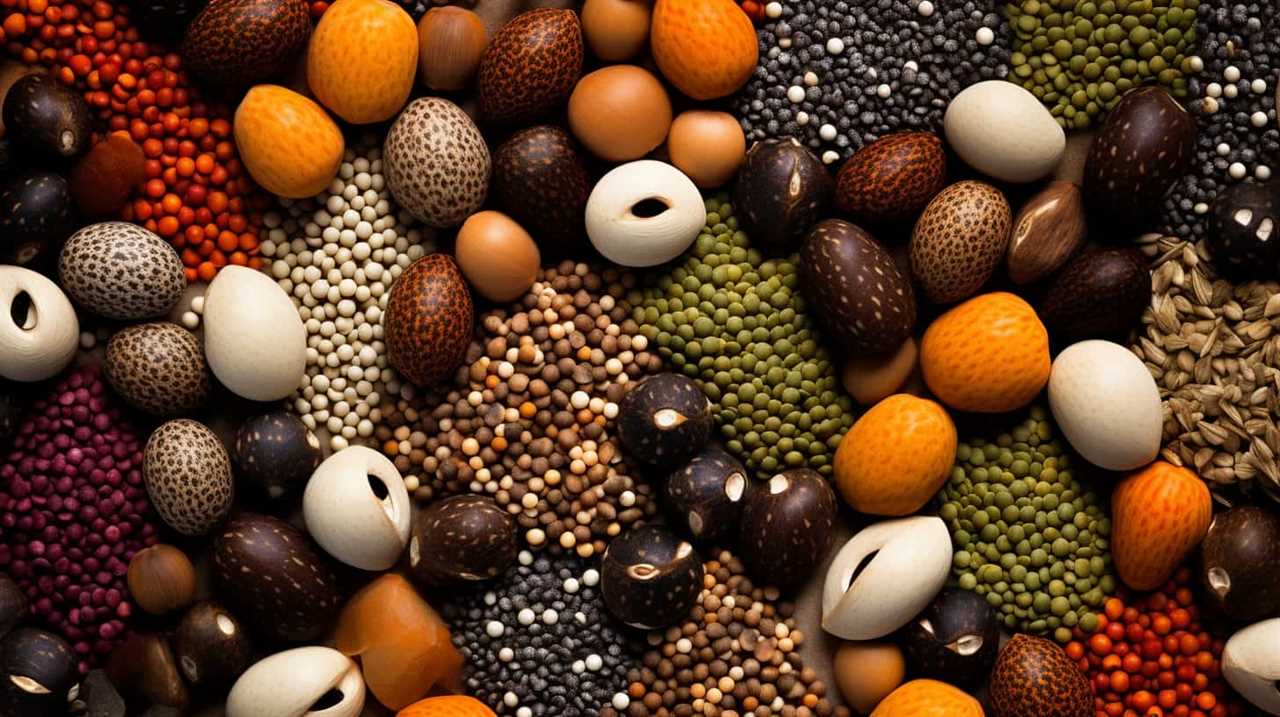
- High in omega-3 fatty acids: Chia seeds are an excellent plant-based source of omega-3 fatty acids, which are important for brain health and reducing inflammation in the body.
- Rich in fiber: One ounce of chia seeds contains a whopping 10 grams of fiber, which can help regulate digestion and promote feelings of fullness.
- Versatile in recipes: Chia seeds can be incorporated into a variety of recipes, including smoothies, puddings, and baked goods, adding a nutritional boost to your favorite dishes.
Incorporating chia seeds into your gluten-free diet can provide numerous health benefits. From improving heart health to aiding in digestion, chia seeds are a versatile and nutritious addition to any meal. Try experimenting with chia seed recipes to discover delicious and creative ways to enjoy these beneficial seeds.
Potential Gluten Contamination Risks
There are several potential gluten contamination risks to be aware of when incorporating chia seeds into a gluten-free diet. Cross contamination is one such risk, as chia seeds may come into contact with gluten-containing grains during the manufacturing process or while being transported or stored. To mitigate this risk, it’s important to choose certified gluten-free chia seeds and ensure they’re stored in a gluten-free environment.
Additionally, hidden sources of gluten in chia products should be considered. Some chia seed mixes or products may contain added ingredients, such as flavorings or fillers, that could potentially contain gluten. It’s crucial to carefully read labels and choose products that are specifically labeled as gluten-free.
Research on Chia Seeds and Gluten Sensitivity
Continuing our exploration of chia seeds’ safety in a gluten-free diet, we delve into the research surrounding chia seeds and their potential impact on individuals with gluten sensitivity.
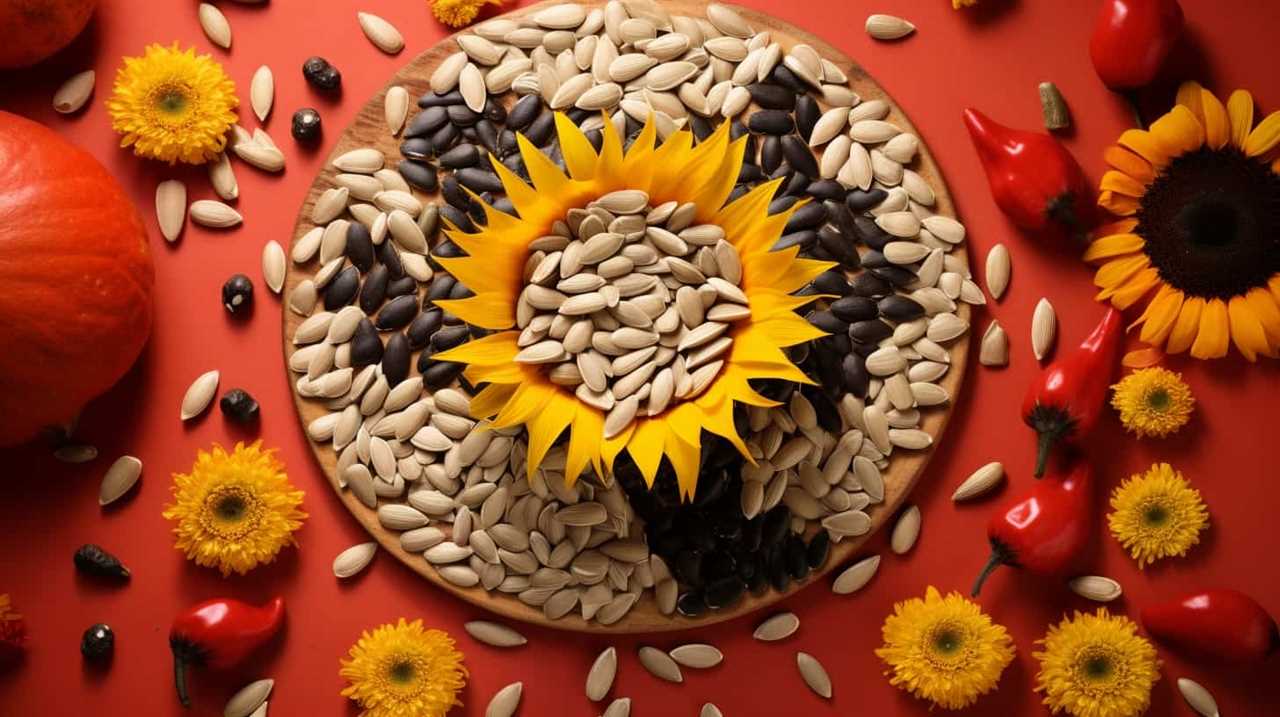
While chia seeds themselves are naturally gluten-free, it’s important to consider their effects on gut health and their potential as a source of omega-3 fatty acids.
- Chia seeds and gut health: Research suggests that chia seeds may have a positive impact on gut health due to their high fiber content. The soluble fiber in chia seeds can help promote regular bowel movements and support a healthy digestive system.
- Chia seeds as a source of omega-3 fatty acids: Chia seeds are one of the richest plant-based sources of omega-3 fatty acids, specifically alpha-linolenic acid (ALA). These fatty acids play a crucial role in reducing inflammation and supporting heart health.
While more research is needed, incorporating chia seeds into a gluten-free diet may provide additional benefits for individuals with gluten sensitivity, including improved gut health and increased intake of omega-3 fatty acids.
Tips for Safely Incorporating Chia Seeds in a Gluten-Free Diet
When considering the safe incorporation of chia seeds in a gluten-free diet, it’s important to prioritize proper handling and storage practices. To ensure safe storage, it’s recommended to store chia seeds in an airtight container in a cool, dry place, away from direct sunlight. This will help prevent the seeds from going rancid and maintain their freshness.
Additionally, it’s crucial to check the expiration date before using chia seeds. When using chia seeds in gluten-free recipes, it’s advisable to follow trusted and reliable recipes specifically designed for gluten-free diets. There are numerous chia seed recipes available that cater to gluten-free individuals, including chia seed pudding, chia seed crackers, and chia seed muffins.
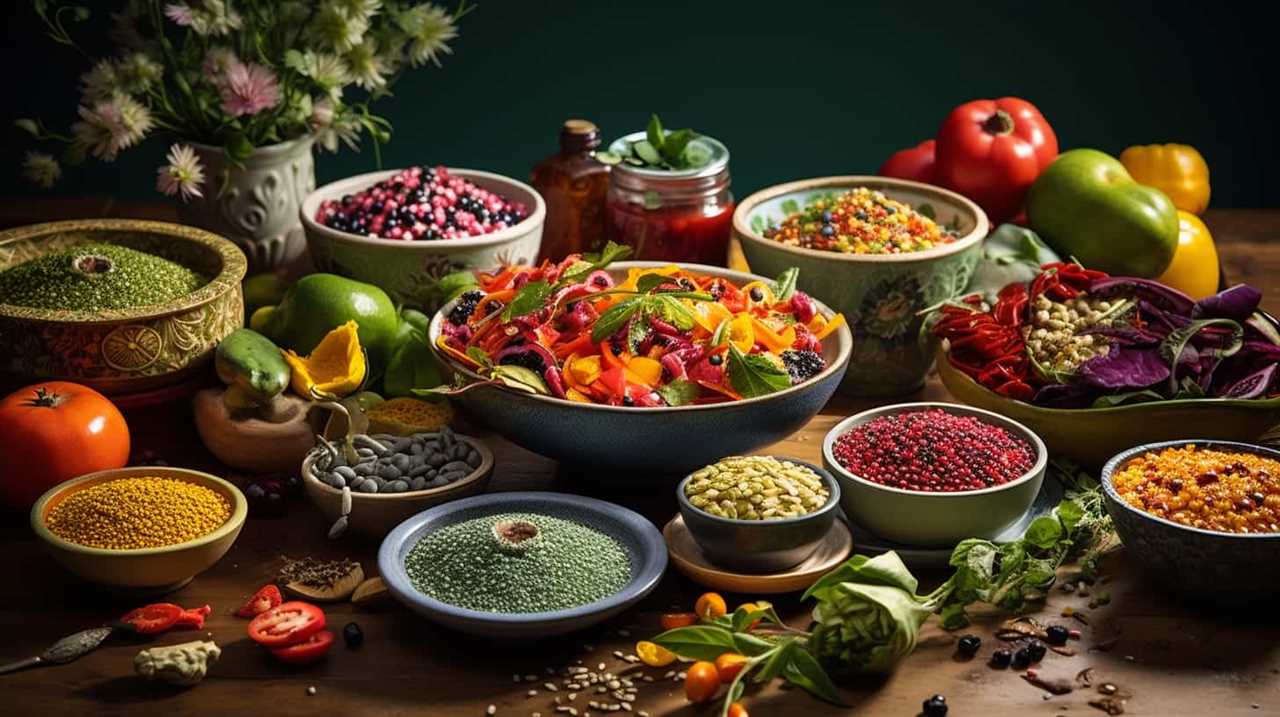
Frequently Asked Questions
Are Chia Seeds Naturally Gluten-Free?
Yes, chia seeds are naturally gluten-free. They can be a safe option for individuals with celiac disease or gluten sensitivity. However, it’s always important to read labels and ensure that there is no cross-contamination.
Can Chia Seeds Be Cross-Contaminated With Gluten During Processing?
Certainly, chia seeds can be cross-contaminated with gluten during processing. To minimize these risks, look for chia seeds with gluten-free certification. It ensures the seeds have undergone rigorous testing and meet gluten-free standards.
How Can I Identify if Chia Seeds Have Been Contaminated With Gluten?
To identify gluten contamination in chia seeds, we can use testing methods specifically designed for gluten detection. These methods allow us to ensure the safety of chia seeds in a gluten-free diet.
Are There Any Studies That Prove Chia Seeds Are Safe for Individuals With Gluten Sensitivity?
There have been studies conducted on chia seeds and their safety for those with gluten sensitivity. These studies suggest that chia seeds can be a safe and healthy alternative with potential health benefits.

What Are Some Potential Risks of Incorporating Chia Seeds Into a Gluten-Free Diet?
Incorporating chia seeds into a gluten-free diet has potential health benefits, including aiding in weight loss. However, it is important to be aware of potential risks, such as digestive issues or allergies.
Conclusion
In conclusion, chia seeds can be safely incorporated into a gluten-free diet without the risk of contamination. Research has shown that chia seeds are naturally gluten-free and don’t pose a threat to those with gluten sensitivity.
By understanding the basics of the gluten-free diet and taking precautions to ensure the purity of chia seeds, individuals can confidently enjoy the nutritional benefits they offer.
So go ahead and sprinkle some chia seeds on your favorite gluten-free dishes, and watch your health flourish like a vibrant garden.
